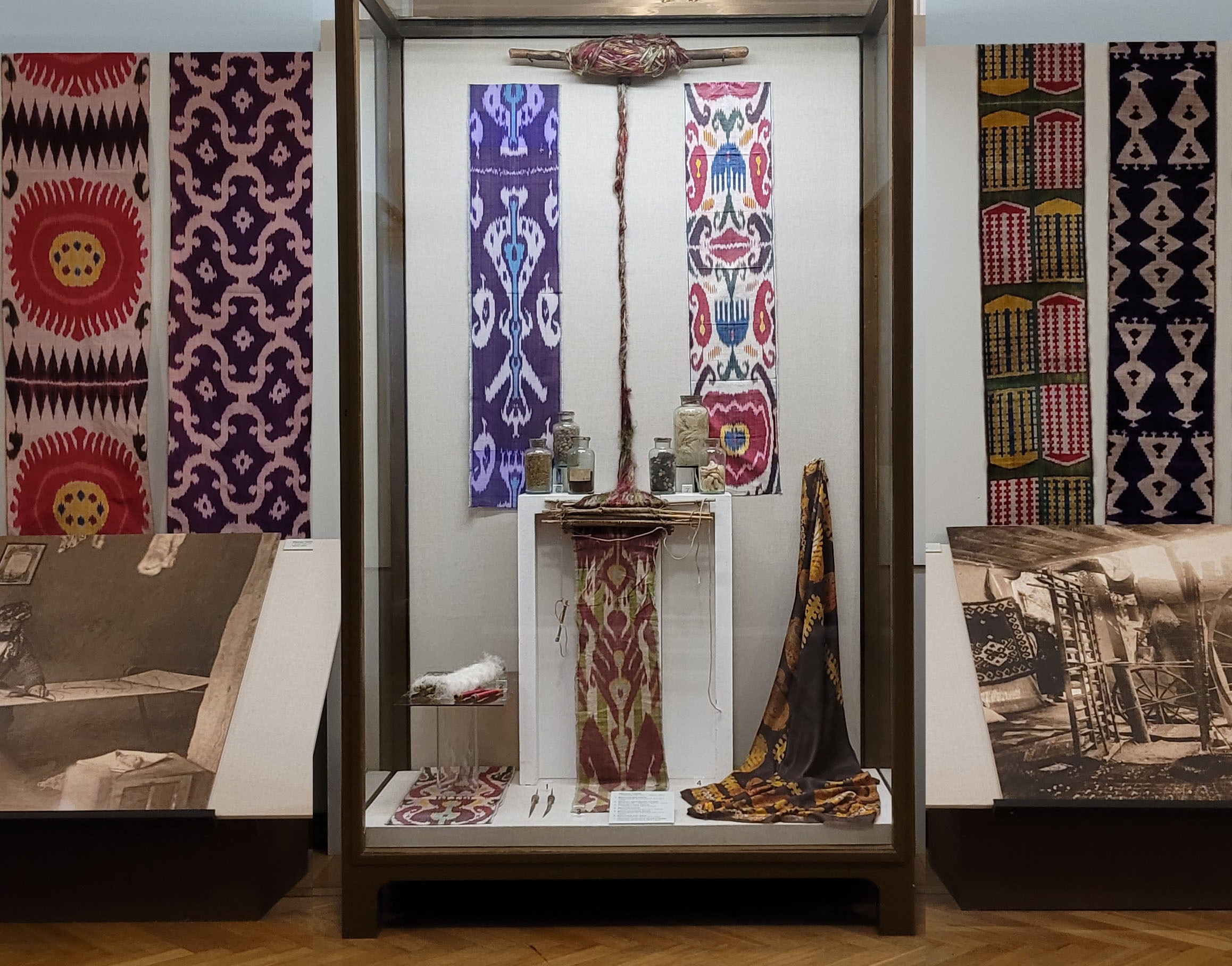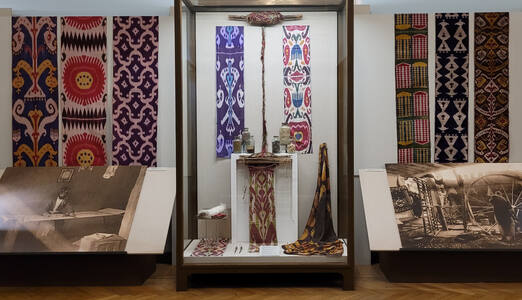Silk in the Culture of Central Asia and Eastern Turkestan

The oasis in the middle of the Zeravshan River (now the territory of the Republic of Uzbekistan) was famous for its silk fabrics back in the mid-first millennium, when this area was called Sogdia. Traditions of elite silk weaving were preserved over centuries in the largest textile centers of the oasis – Bukhara and Samarkand, where in the early 20th century the manufacture of artisanal silk fabrics of high quality and outstanding artistic merits never stopped. Bukhara and Samarkand were famous for the ikat fabrics, which in the Central Asia were known as abr (from Arabic ‘cloud’). They were decorated with a method of reserve dyeing of the base. Qualified craftsmen consistently performed the following operations: the application of a contour drawing on the prepared threads of the base, dense wrapping of individual areas of the basis with threads (reserve), dyeing certain parts by hot method, if necessary, by cold dying method. In Bukhara, there were several popular ornamented products like pure silk shoyi sarsenet, semi-silk adras, and bakhmal silk velvet. The finished shoyi and adras pieces were burnished to give them a special glow.
These fabrics were meant for the elite’s garments of the Central Asian society, festive caparisons, etc. In the Emirate of Bukhara, silk pieces were part of diplomatic gifts and rewards. The Central Asian silk was popular with the nomadic population of the region as prestigious goods. Outside Central Asia, ikats were popular with the Tatars of the Volga Region and the Cis-Urals Region, as well as with the Siberian Tatars. Stylized images of ikat fabrics were used in the ornaments of Russian textile manufactures.
Fabric samples. Bukhara. Late 19th century. Tajiks, Uzbeks
Fabric samples. Samarqand. 1900–1902. Tajiks, Uzbeks
1. Silk spindle. Samarqand Region. Last third of the 19th century. Uzbeks
2. Silk thread spools. Margilan, Fergana Region. 1950s. Uzbeks
3. Loom (fragment), Samarqand. Late 19th century. Tajiks
4. Women’s headscarf. Bukhara. Last third of the 19th century. Tajiks
5. Silk yarn bundle. Samarqand Region. Last third of the 19th century. Tajiks
6. Fabric dyes. Samarqand Region. Late 19th century. Uzbeks
7. Silk thread and yarn samples. Samarqand Region. Late 19th century. Uzbeks



